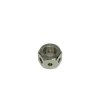whiskey3
Member
I am new to reloading and the board. With that said I have some noob questions.
I have done some research on loading this caliber. I have seen alot of comments about case/head seperations and brass bulging above the belt. Evidently Larry Willis of Innovative makes a special collet die for this problem, is it needed?
Next, Weatherby made rifles are "free bore" and I don't think the 700 is, should I back of recommended loads for the Weatherby?
My current load plan is to start with 80 grains of RL 22 with a 165 grain nossler ballistic tip out of a Remingtion case with a federal 215 primer. I also plan to neck size only as much as possible and set the bullet .020" of the lands. Is this in the ball park?
Any help / guidance will be greatly appreciated!!
I have done some research on loading this caliber. I have seen alot of comments about case/head seperations and brass bulging above the belt. Evidently Larry Willis of Innovative makes a special collet die for this problem, is it needed?
Next, Weatherby made rifles are "free bore" and I don't think the 700 is, should I back of recommended loads for the Weatherby?
My current load plan is to start with 80 grains of RL 22 with a 165 grain nossler ballistic tip out of a Remingtion case with a federal 215 primer. I also plan to neck size only as much as possible and set the bullet .020" of the lands. Is this in the ball park?
Any help / guidance will be greatly appreciated!!



